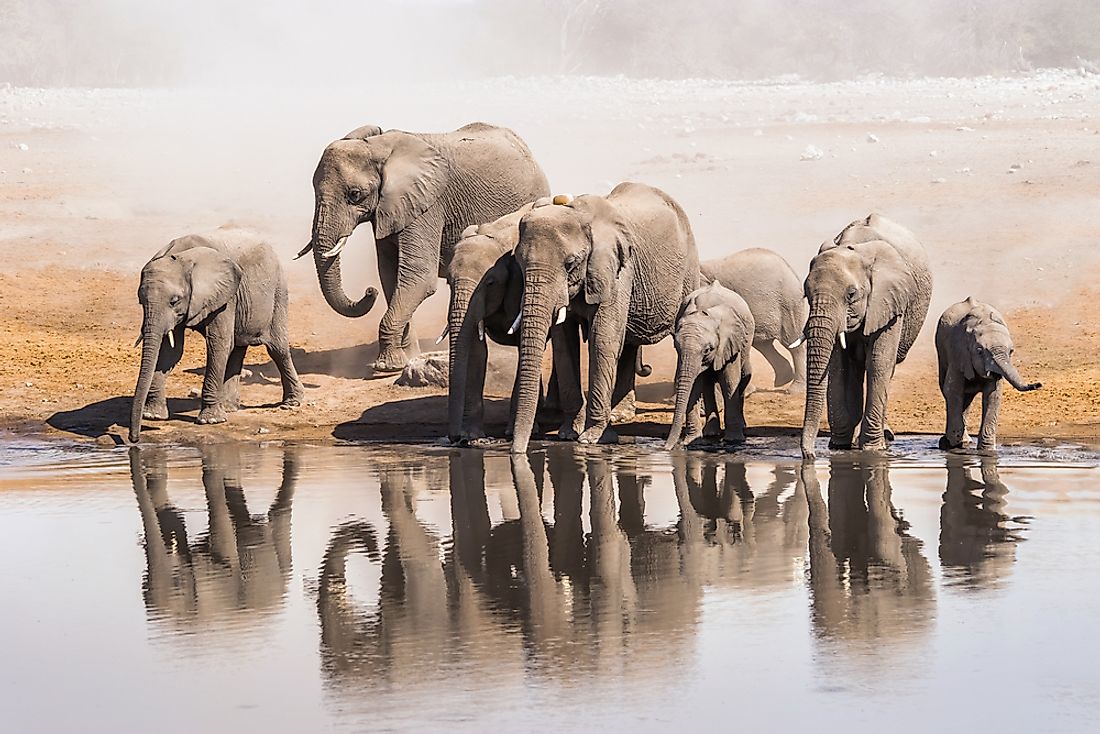How Many Elephants Are There in the World?

Elephants are large animal species classified as mammals; they are from the Elephantidae family. Elephants are grouped into two broad species; the Asian elephant and the African elephant. The number of elephants in the world has been quickly declining over the past several decades. Today, there are estimated to be approximately 440,000 elephants left in the world.
Ecology & Behavior of Elephants
Some of their unique characteristics include their long trunks that they use for various purposes such as picking objects, taking water, and for breathing. The elephant's incisor teeth also mature into tusks that they use for moving items and digging. Moreover, elephants have huge floppy ears, which they use to regulate their body temperature. They are herbivorous since their diet mostly includes leaves, grass, and barks. In a single day, elephants can ingest food equivalent to 150 kilograms and forty liters of water.
Female elephants usually form matriarchal family groups. The family groups are usually made up of ten members or more. The leader of the group is known as a matriarch; a matriarch needs to be the oldest and sometimes the largest animal in the group. A matriarch usually leads the group until she has no strength or dies. Male elephants are also part of the family group until they are about 12-15 years when they may live alone or with other males. Elephants usually mate during wet seasons, and copulation takes approximately 46 seconds. The conception period of elephants is usually about 22 months. A young calf weighs about 120 kilograms and is about 85 centimeters tall.
Where Do Elephants Live?
Elephants live in parts of Africa and Asia. As mentioned earlier, there are only two existing species of elephants in the world which are then divided into subspecies. The African forest elephants live in the central and western areas of the rainforest of Africa while the African savannah elephants or bush elephants inhabit countries to the south of the Sahara desert. On the other hand, Asian elephants live in China, India, Southeast Asia, and Sri Lanka. Asian elephants were significant to the Asian culture many years ago; they were tamed and were used for the transportation of heavy material and in religious festivals.
Number of Elephants in the World
According to the International Union of Conservation of Nature (ICUN), elephants are endangered animal species. Some of the challenges affecting elephants include the demolition of their homes, poaching for profit from their ivory tusks and war with local inhabitants. There were a few million African elephants and approximately 100,000 Asian elephants in the twentieth century. The population of all elephants was 1.3 million as of 1979.
However, the population decreased severely ten years down the line; there were about 609,000 elephants left. Among the 609,000 elephants, 277,000 and 110,000 elephants inhabited Central Africa and Eastern Africa respectively. On the other hand, 204,000 elephants lived in Southern Africa while the remaining 19,000 inhabited West Africa. Between the year 1977 and 1989, the population of elephants in East Africa decreased by 74%.
As of 2012, the ICUN stated that there were only about 440,000 elephants left in total. The union also recognized that Asian elephants were endangered in 2008; this was because of their declining population by 50% over the past 60-70 years. Presently, there are only about 35,000-40,000 Asian elephants and 450,000-700,000 African elephants.











